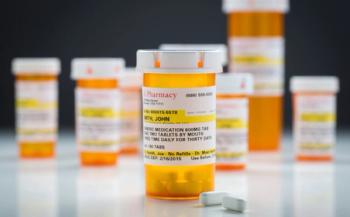
Empathy: The Foundation of Health Literacy
Going beyond the words of healthcare communication.
As a result of the pandemic, the general consumer is becoming more engaged with health and science. While this is a very positive development, it means healthcare professionals, pharmaceutical brands, and communicators must work harder to ensure health information is accessible for all.
Infusing empathy and humanity
The stakes in healthcare communication are incredibly high because health literacy is directly correlated to better outcomes. What’s more, the health literacy problem impacts
Fortunately, this is an area we as healthcare communicators can impact. We can adjust the way we convey complex information so that it is understood by the many, not the few. But to make the biggest difference, we must understand who the audience is and how they are feeling when they are accessing healthcare information. Simply, we must practice empathy.
Communication is more than just words
Communication is about heart, humanity and truly understanding people. We cannot ignore that we’re often communicating to people facing serious, chronic or life-threatening conditions. They may feel like their worlds have been turned upside down; they are often at their most vulnerable.
When we put ourselves in the shoes of those we are trying to reach, taking into account the emotional impact of disease and the myriad accompanying concerns, we do a better job of reaching people so that they connect with, understand, and use the information they need.
Try implementing these eight tips for healthcare communicators when you’re creating spoken or written materials:
- Always lead with empathy. Listen to understand what state of mind people may be in when they’re receiving information amid a potentially life-changing diagnosis.
- Encourage partnership. Patients may only process a small percentage of what they discuss with their provider. Suggest they bring a caregiver or advocate to take notes at doctor’s appointments.
- Account for culture. Familiarize yourself with cultural nuances and healthcare beliefs among certain diverse racial and ethnic communities.
- Ensure accessibility. Incorporate translation services and target your communications to reach underserved communities who are more at risk when it comes to health literacy.
- Steer clear of jargon. Carefully consider word choice. Remind your medical spokespeople and providers not to default to jargon (where they may often feel most comfortable).
- Simplify and reorganize. Edit your copy down to the essentials, putting the most important points first.
- Customize information. Even for the same disease, your communications should differ based on where patients are in their treatment timeline.
- Make no assumptions. Don’t assume patients have wi-fi access to look something up if they don’t understand it.
Health literacy resources
Thankfully, a lot of work has and is being done to draw attention to the issue of limited health literacy. We are seeing more and more toolkits and resources being developed by public and private organizations who want to be part of the health literacy solution.
Here are three key resources to bookmark:
CDC Plain Language resources (this includes a jargon translator for improved comprehension).National Action Plan to Improve Health Literacy by the U.S. Department of Health and Human Services.Clear Communication initiative from the National Institutes of Health (NIH).
Healthcare communications is about far more than just words. Before the words, we need to understand who we are speaking to, what they’re going through at that moment, and how we can best help them access, understand, and use the information they need to improve or manage their health. So much of the healthcare journey is intimidating. We have the ability to change that.
Abigail Obre, Vice President, Goodfuse Communications
Newsletter
Lead with insight with the Pharmaceutical Executive newsletter, featuring strategic analysis, leadership trends, and market intelligence for biopharma decision-makers.





